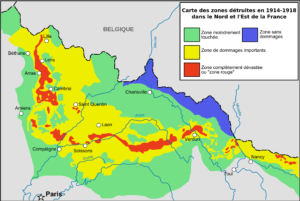One hundred years ago Europe was in the grip of the Great War. Two years prior the assassination of Archduke Franz Ferdinand by Serbian nationalist Gavrilo Princip ignited the war. The formal alliance system which brought stability for a generation failed. Instead of providing security through strength, the rigid entanglement of agreements unleashed cataclysmic destruction. Confident in victory by Christmas each side mobilized their forces. The Germans initiated their Schlieffen Plan (as modified by Moltke) and the Austrians invaded Serbia. The French responded with Plan XVII’s attack. Their Russian allies launched an invasion of Prussia, while the British sent the BEF to the continent.
It soon became clear that neither side possessed the ability to quickly defeat the other. Both alliances worked feverishly to alter the balance of power. The Central Powers enticed the Ottoman Empire and Bulgaria to join their cause. The Allies induced Italy to join the fray. Each fomented revolution in their adversaries empires; the Irish in the UK, Poles in Russia, and the numerous ethnic groups within the Austro-Hungarian Empire. When these tactics failed they turned to the technologies of their industrialized economies. Machine guns, submarines, air warfare, poison gas, and tanks, were new technologies deployed with devastating effect during the Great War.
Eventually after more than four years of total industrialized warfare the primary combatants began to fail. The Russian Empire went through two revolutions before descending into years of bloody civil war. The Austro-Hungarian Empire dissolved into its constituent parts. The Ottoman Empire collapsed into chaos and ethnic slaughter. The surviving combatants were near the brink of exhaustion. French troops mutinied and refused to fight. The German population hovered near starvation. Britain’s homeland was largely untouched, but its finances were in ruins.
The Aftermath
Even in peace, the consequences of the Great War or the war to end all wars failed to meet expectations. Less than a generation later the unsettled issued of World War I led to an even greater conflict World War II. The impacts of the World War I remain with us even today. Many major political, economic, and social issues of our day have their roots in the Great War. But its legacy stretches beyond these problems. Following the war large areas in eastern France were unusable. Today’s map courtesy of wikipedia illustrates this physical destruction. For those whose French is like mine, here’s a key to the map. Blue represents no damage, while green areas experienced moderate damage. Agriculture, towns, and infrastructure in yellow areas was heavily damaged, while in the red areas it was totally destroyed.
Today 98 years after the hostilities ended over 60 square miles of land remains off limits for human habitation and agriculture. Non-biodegradable lead and other elements from munitions will remain in dangerous concentrations for thousands of years.
While there are uncertainties about the precise wording, there is little doubt that William Tecumseh Sherman was correct when he said – “War is Hell!”
As always thanks for reading.
Armen
For more information about Zone Rouge click on the link below:
Zone Rouge Article & Pics


